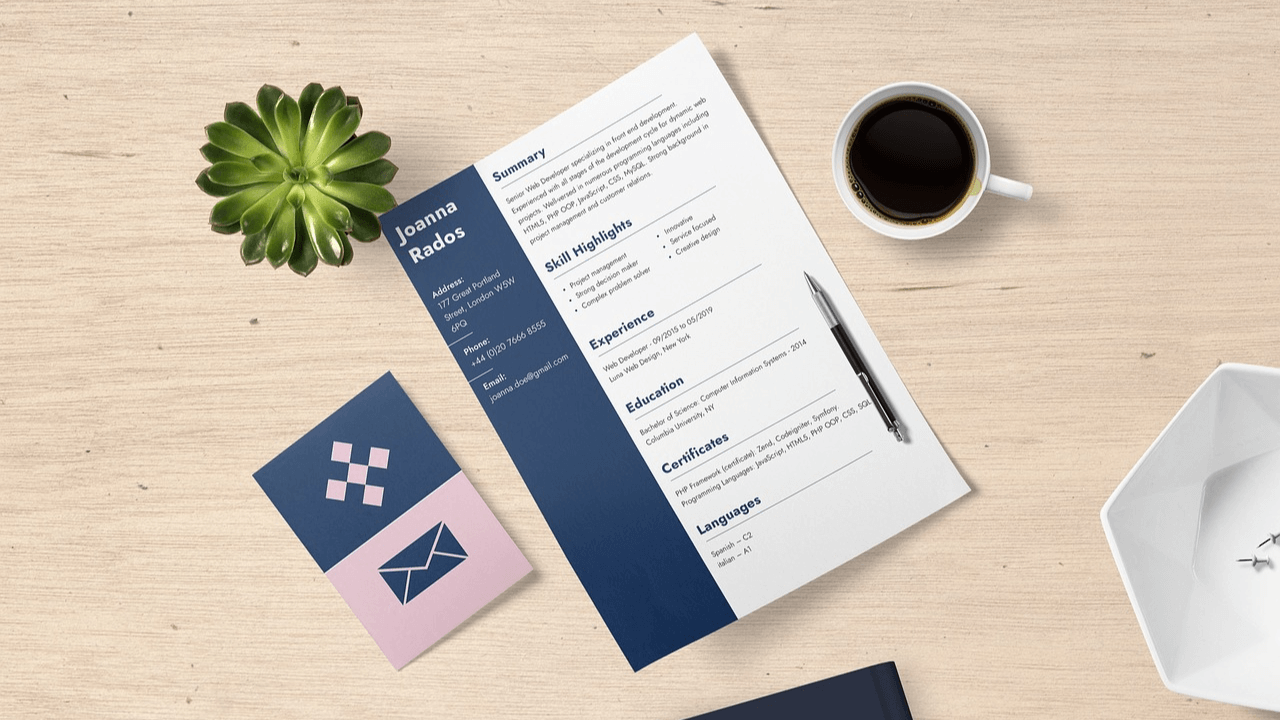how to create the perfect CV
Craft the perfect curriculum vitae (CV)
In the competitive job market, your curriculum vitae (CV) serves as the first impression you make on potential employers. A well-crafted CV is not just a document; it's your personal marketing brochure. 6-8 seconds is the average time recruiters/employers spend reading a CV, so make it count.
General Tips
Keep it concise and tailored: A CV should be no longer than two pages and should be tailored according to the job you are applying for. Use bullet points and short paragraphs to make it easy to skim and highlight your most relevant experiences.
Use a clear and consistent format: Use a clear font, such as Arial or Times New Roman, and keep the font size between 10 and 12 points. Add headings and subheadings to organise your CV to make it easy to read and save it in Word/PDF format.
Customise your personal statement: Your personal statement is the first chance you have to make a good impression, so make it count. Highlight your experience, skills, and career goals, and make sure it is tailored to match the job you are applying for.
Highlight your achievements: Use specific examples and numerical data to highlight your achievements from your previous roles. Include any awards, promotions, or other recognition you have received.
Highlight your skills: Identify the key skills required for the job you are applying for and make sure to highlight them in your CV. Use concrete examples to show how you have demonstrated these skills in the past.
Education and certifications: Outline your educational background and any relevant certifications. Include the name of the institution, dates attended, and the qualifications obtained (e.g.: degree, six sigma, prince2 etc.). If you've attended workshops or completed online courses, mention those too. Continuous learning reflects your commitment to personal and professional development.
Professional experience: In the work experience section, use a reverse-chronological format, starting with your most recent role. Include the organisation's name, your job title, and the dates of employment. Provide a brief overview of your responsibilities, focusing on how your contributions positively impacted the organisation.
Use keywords and action verbs: When writing your CV, use keywords and action verbs relevant to the job you are applying for. This will make it easier for recruiters and employers to quickly identify your relevant experience and skills.
Proofread and edit your CV thoroughly: Before you send your CV, make sure to proofread and edit it thoroughly for spelling and grammar errors. Ask someone else to read it as well to ensure that it is error-free.
Facts and fiction - Your CV is like a sales pitch, but honesty is key. Exaggerations may catch up with you during tests or interviews. Skip problematic details in your CV, highlight confident skills instead. Employers appreciate honesty, so discuss concerns in the interview without dwelling on them too much.
Gaps in your CV? -If you’ve taken time out to travel or pursue a different activity this is now perfectly acceptable. However, the general perception is that this is not a ‘proper job’ so won’t carry the same weight as more work-based experience.
Too many short-term jobs? -Ease employer concerns about your job stability by mentioning reasons for leaving in each role. This proactive approach addresses questions upfront and avoids initial rejections for seeming like a 'job hopper'. If your roles were interim contracts, clearly state their durations on your CV.
Don’t forget to include:
- Contact details - Full address, postcode, mobile number, e-mail – and LinkedIn profile- These are vital details making it possible for agencies and organisations to contact you, know where candidates are looking for work, but also to register CVs on their systems. Most candidate tracking systems work on postcodes to find candidates once registered.
- Languages – Make sure you include all the languages that you speak and the level of ability.
Forget to include:
- A photo –LinkedIn can provide this information, but it doesn’t need to be on your CV (The UK job market does not require a photo).
- Format - Don’t save your CV as a PowerPoint or an Infographic, it might look good, but it can’t be used by agencies and often won't upload to company career websites.
- Language - CVs should not be written in third person; it is dated and not considered ‘good CV etiquette’. Use first person and choose present or past tense to showcase the most important and relevant information to your employment goals.
Conclusion:
Crafting the perfect CV is an ongoing process that evolves with your career. By following these tips, you'll create a compelling document that not only reflects your professional journey but also positions you as the standout candidate employers are seeking. Remember, your CV is not just about recognising your achievements but also about ensuring that employers recognise your potential.
Related News



